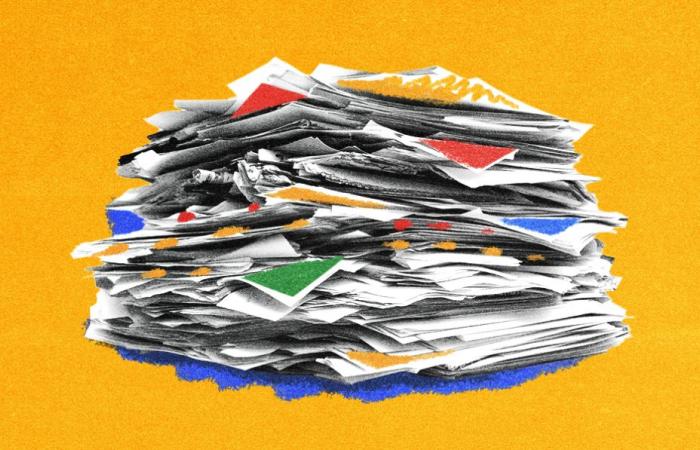In a vice-like antitrust bind, Google and the U.S. Justice Department are preparing to present closing arguments in the ad tech antitrust case today (Nov. 25), rounding off one of the most arduous months in industry history. The trial, which began in September, is being heard in U.S. federal court presided by Judge Leonie Brinkema.
Firstly, let’s recap developments in last week’s antitrust search case. Following a federal ruling declaring Google’s search operations a monopoly, the Justice Department has proposed measures (see below) to curb its dominance and promote competition.
- Divest the Chrome browser
- Place behavioral restrictions on the Android operating system
- Establish a measure to share Google’s search data with competitors
- Prohibit agreements to make Google a default search provider
- Enforce limits on its AI development developments
It’s perhaps also worth noting that Google’s search trial lawyers have said the company doesn’t make money off Chrome because it isn’t licensed, but it also in ways supports rivals like Mozilla’s Firefox.
Google has voiced its intention to challenge this ruling, with a conclusion most likely years away. But more immediately, the online advertising giant’s legal team will be busy presenting closing arguments in a Virginia courtroom.
In this case, the DOJ contends that Google leveraged its ad exchange and publisher ad server to dominate programmatic advertising, disadvantaging competitors (see video).
Beginning on Sept. 9, 2024, and over a three-week trial, the industry sector was in equal part entertained and appalled by revelations illustrating Google’s lesser-shown ruthless streak, and under-the-counter dealings, with some wondering if Google can ever be reined in, given the evidence on display.
In response to the DOJ’s allegations, Google’s defense team has employed a strategy based on several key tentpoles, with its closing terms on course to be presented by Karen Dunn. These include:
- Challenging market definition: the DOJ’s focus on display advertising is outdated, and overlooks the presence of other Big Tech players
- Justifying acquisitions: Acquiring companies such as DoubleClick and AdMeld, enhanced publisher monetization opportunities, and improved competition
- Highlighting ecosystem efficiency: Google’s market share is based on its ability to provide better efficiency, and it isn’t obligated to share with competitors
- Supporting SMEs: The extensive use of Google’s ad tech tools by SMEs (due to their comprehensive utility) makes it a lynchpin to the U.S. economy
More specifically, Google’s team is likely to maintain that the DOJ’s request for injunctive relief, such as its ad exchange participating in header bidding ad auctions outside of its own pipes, is contrary to legal standards.
Both parties’ written arguments filed this month provide a preview of what might come up in court. Spanning more than 1,000 pages, the documents offer a recap of evidence from the trial along with legal arguments to make each case.
DOJ preview
To establish Google’s liability for monopolization, the DOJ will need to prove two key elements: That Google has monopoly power in the relevant market and it attempted to gain or maintain its power through anticompetitive actions.
The DOJ will likely present trial evidence and testimony related to how Google used tying arrangements to DFP and AdX so publishers had a hard time using one without the other. It’ll also need to prove the existence of two separate markets controlled by Google and show Google can control prices or exclude competition in a defined market for a particular product or service.
In its revised findings of fact and conclusions of law, the DOJ argues Google planned to dominate the ad tech market from the start. While citing acquisitions like DoubleClick and AdMeld, the DOJ also includes trial evidence related to Google’s actions like First Look, Last Look, and Unified Pricing Rules.
The DOJ’s trial testimony examples include former Facebook exec Brian Boland, who described First Look as “cherry picking” and PubMatic co-founder Rajeev Goel who said First Look “suppressed competition.” The DOJ also cited internal Google documents entered as evidence, including one employee who warned against improving DoubleClick for Publishers in some ways, could “destroy this competitive First Look advantage” and lead to “losing access to overall queries.” The DOJ will likely mention Google’s efforts to hide evidence by turning off history on chats or employing attorney-client privilege in emails.
Another expected argument is the existence of separate product markets for open-web display advertising — for publisher ad servers, advertiser ad networks, and ad exchanges — with tools being less interchangeable as Google suggests. The DOJ could also raise how Google’s quality of products to poke holes in its defense that denying competitors access was about preventing ad fraud and improving brand safety. The DOJ is also likely to argue the past Supreme Court cases Google uses in its defense don’t hold up. For example, government lawyers argue the Trinko rules don’t apply to Google’s conduct in the ad tech market. They contend that Google’s actions, such as tying arrangements, go beyond a simple refusal to deal and are not protected by Trinko.
Google’s arguments preview
Google’s closing arguments will argue that antitrust case law negates some of what the DOJ alleges. To address the DOJ’s claims that Google refused to fairly deal with rivals, company lawyers will argue the U.S. Supreme Court’s decision in Verizon v. Trinko supports Google’s freedom to choose its partners. To argue against how the DOJ defines the market in question, Google will lean on a decision in Ohio v American Express by arguing the court should view Google’s two-sided transaction platform as a single market rather than viewing publishers and advertisers as separate markets.
In its revised conclusions of law filed this month, Google lawyers cite the Supreme Court’s 1977 ruling that determined antitrust laws aren’t meant to protect competitors and only protect competition. “In the display advertising market — even in the words of Google’s rivals — competition remains ‘intense,’” Google’s lawyers wrote. However, Digiday recalls ad tech trial witnesses describing healthy competition with other ad tech firms and not in the context of competing with Google.
Even if the court agrees with the DOJ’s market definition and determines Google as a monopoly, Google lawyers plan to argue that the DOJ hasn’t proven how Google used its monopoly status to harm publishers, advertisers, or rival ad tech companies. Google’s lawyers are also likely to argue that competition in the ad tech market is still dynamic with plenty of advertiser options, ongoing innovation from Google and its rivals, and continued growth across ad tech companies and online platforms like Meta and Amazon.
Google’s defense includes using a legal tactic called the “but-for test,” a legal tactic that looks at whether the defendant’s actions directly caused harm in the ad market as the DOJ claims. Google argues the DOJ hasn’t convincingly shown how the market would function without the alleged anticompetitive conduct, making it harder to prove harm. However, the DOJ’s revised findings state they don’t need to prove Google’s conduct was the sole cause of harm, only that it could significantly contribute to maintaining monopoly power.
Defense lawyers are also likely to argue parts of the DOJ’s case about aspects like “First Look” and “Last Look” no longer exist and aren’t relevant to the industry’s current and future outlook. And without monetary damages on the table, Google also could pose the question: What does the DOJ want as a result of the trial?






